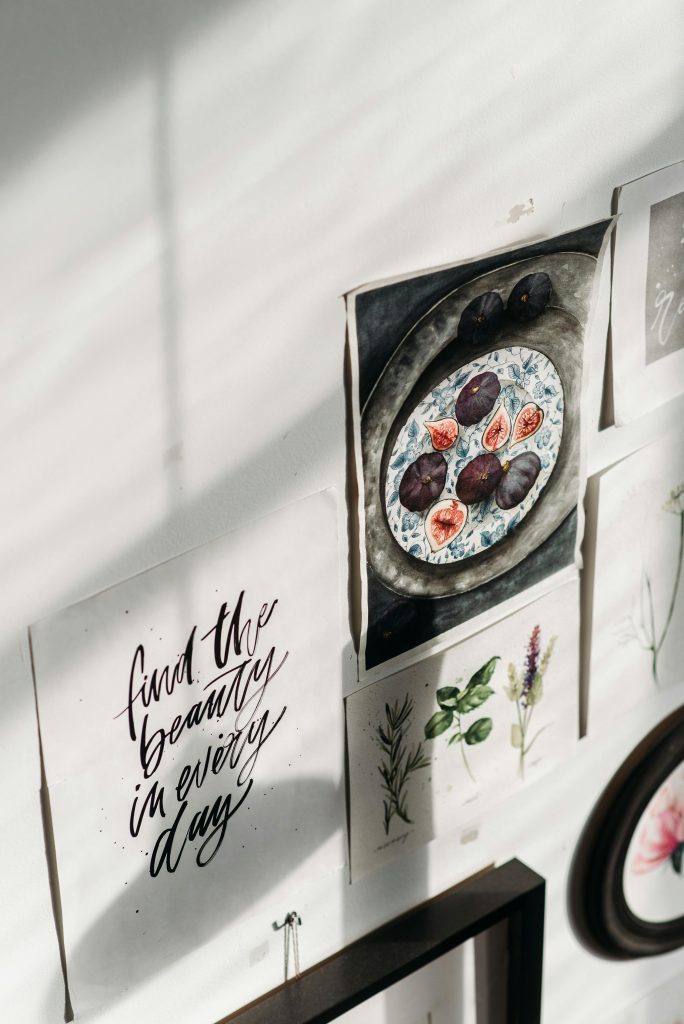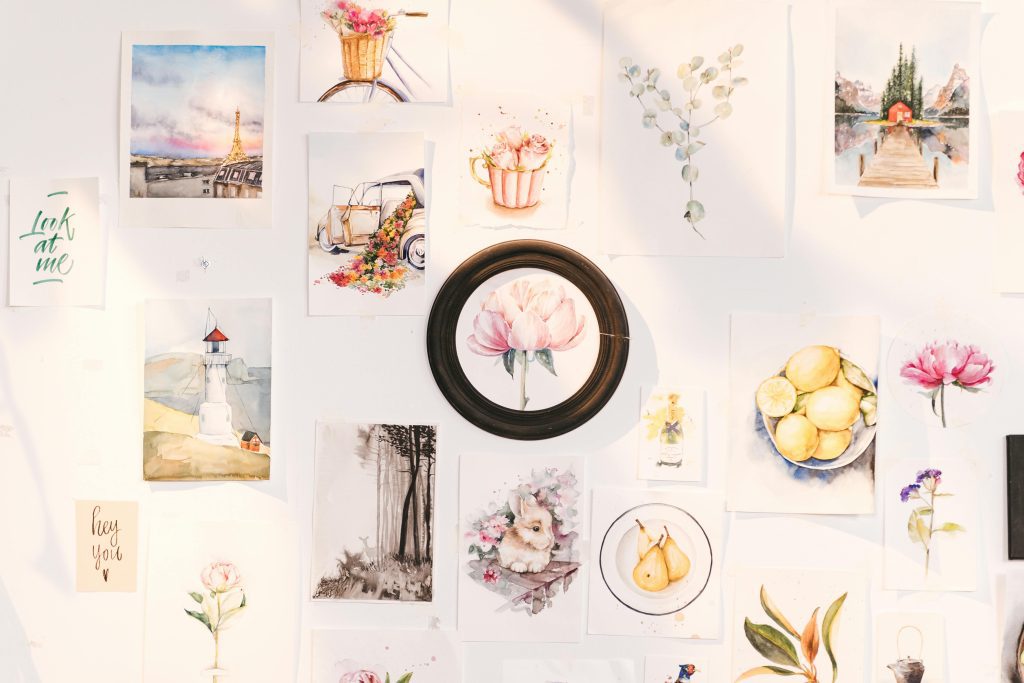How to Land Opportunities Without a Huge Portfolio

1. Why “More” Isn’t Always Better
Most artists assume that the key to unlocking opportunities is having a giant, polished portfolio filled with dozens of works. But here’s the truth: quality beats quantity almost every time. A small body of work that’s intentional, cohesive, and authentic can outshine a massive gallery of random pieces. Think of it like a restaurant menu. If the chef offers fifty different dishes but only cooks five well, the diners will remember the bad ones more than the good. On the other hand, a short menu of well-executed meals leaves a stronger impression.
Curators, gallery owners, and clients are busy. They don’t want to sift through everything you’ve ever made; they want to quickly understand who you are as an artist. If your portfolio is small but sharp, they’ll see clarity instead of confusion. This is why many emerging artists find themselves winning opportunities before they’ve built a giant archive of work. It’s about focus, not volume.
Having a limited number of artworks can even create intrigue. When a potential buyer or juror sees that you only have a few works in your portfolio, they might wonder about the process and the story behind them. That curiosity can lead to deeper conversations, and deeper conversations often lead to opportunities. It turns your scarcity into a strength.
The mental shift here is to stop apologizing for having less and start embracing the fact that “less” can be your superpower. You can give more attention to each piece, refine your narrative, and present yourself as deliberate instead of desperate. The less clutter you have, the easier it is for your audience to see your vision clearly.
And here’s the kicker: having a smaller portfolio also allows you to evolve faster. You’re not weighed down by past works that no longer represent where you want to go. You can adapt, experiment, and present fresh work without feeling trapped by what came before. That’s something artists with huge backlogs often struggle to do.
2. Play the “Greatest Hits” Game
If you’re worried your portfolio is too small, start thinking like a band releasing an album. Bands don’t give the public every demo they’ve ever recorded; they carefully select their greatest hits. You can do the same. Pick the few pieces that truly represent your voice, your style, and your capabilities, and lead with those. They will act like the singles that get people to pay attention.
One of the biggest mistakes artists make is including “filler” just to make their portfolio look fuller. That only waters down the impact of your best work. Instead, curate like a DJ choosing tracks for a live set: only include the work that makes people stop and take notice. Your goal is not to show everything you can do, but to show the work that will make someone want to see more.
The greatest hits approach also works psychologically. Humans remember beginnings and endings more than the middle. If you give them a small set of strong works, they’ll remember you as consistently good. But if you bury your gems between mediocre pieces, the overall impression suffers. Fewer but stronger pieces means a cleaner mental image for your audience.
Think of it as creating a concentrated dose of your artistic DNA. You want your portfolio to feel like an espresso shot, not a watery pot of coffee. Strong, distinct, and memorable beats big and forgettable every time. It’s the same principle in advertising: one perfect tagline can stick for years, while dozens of average ones disappear overnight.
And here’s the fun part: the greatest hits mindset takes the pressure off. You don’t need to scramble to make more work just to “fill” your portfolio. You can spend more time developing the few pieces you do have, refining them until they’re truly representative of what you want to put out in the world.
3. Make Your Story the Star
When your portfolio is small, your story can do the heavy lifting. People don’t just buy art; they buy into the person behind it. Your narrative can become a powerful bridge between your work and the opportunities you want to land. Even with only a few artworks, you can still present a rich, compelling journey that draws people in.
Your story isn’t just your biography, it’s the why behind your work. Why did you create these pieces? What are you exploring? How does your personal history or perspective shape what you make? These questions invite deeper engagement than simply showing a row of images. A juror or buyer might pass over a large but impersonal portfolio, yet stop to consider a smaller body of work if the story resonates.
One way to strengthen your story is to connect it to universal themes. Even if your art is deeply personal, there’s often a relatable thread: resilience, transformation, nostalgia, identity. If you can express that thread clearly in your artist statement, you turn your work into something people can emotionally connect with. That connection often matters more than quantity.
You can also build your story visually. Use behind-the-scenes photos, process videos, and studio snapshots to show how the work comes to life. These moments give your audience more context, and they fill in the gaps when your portfolio is small. They also make you more memorable, because you’re showing the journey, not just the destination.
Most importantly, own your stage of growth. Instead of hiding the fact that you’re still building your body of work, make it part of your narrative. Frame it as an exciting moment where your voice is becoming clearer with every piece you create. People love being part of someone’s early journey, it makes them feel like they’ve discovered you before the rest of the world does.

4. Make Your Few Pieces Work Harder Than a Hundred
If your portfolio feels a little… well, thin, the trick is to make every piece count twice, maybe even three times. Instead of thinking “I don’t have enough work,” think “I have the best of the best.” It’s like dressing for an event with only three outfits in your closet , you pick the one that makes you feel powerful, confident, and absolutely you. The same applies here. One strong artwork can make more impact than ten so-so ones, if it’s presented with intention.
This is where thoughtful presentation comes in. The way you photograph your work, the lighting you choose, the framing, and even the background story can turn a single piece into a showstopper. If you’ve got a sculpture, for example, don’t just snap a photo from one angle. Show close-ups, a behind-the-scenes shot of you working on it, and maybe even a short video of it in different lighting. Suddenly, that’s not just “one sculpture,” it’s a whole portfolio story in itself.
Repackaging is another underrated superpower. Maybe you painted a series of florals but only have three finished canvases. Present them as a “study collection” or “selected works” and frame them as part of a thematic exploration. That way, viewers see it as a cohesive project rather than a small one. The same strategy works for digital art, photography, and even textile work , name the project, explain the concept, and give it a little spotlight magic.
This approach also buys you time. While you’re building more work, the few pieces you already have are out there doing the heavy lifting. Think of them like loyal team members holding the fort while you recruit more talent. Every time you share them, put them in a different context , a gallery submission, an Instagram carousel, an artist feature pitch. With each appearance, they feel fresh and relevant, even if they’re the same pieces.
And remember, art directors, curators, and clients don’t sit down with a counter and say, “Oh, only six works? Pass.” What they want is to be convinced you can deliver quality and vision. If your three strongest pieces show that, you’ve already done more than most bloated portfolios with filler work.
5. Sometimes a Single Strong Concept Works Best
Here’s the truth , people remember concepts far more than they remember volume. A single, well-thought-out idea, executed beautifully, can stick in someone’s mind for years. Think about how certain songs only have one hook, but you hum them for weeks. Your art can do the same.
Instead of scrambling to fill your portfolio with different styles and subjects, focus on one idea and milk it for all it’s worth. If you’ve explored “urban solitude” in your work, commit to it fully. Show it through paintings, sketches, photography, or installations , all tied back to that one central vision. This makes you memorable because your work feels intentional, not scattered.
A single strong concept also gives your portfolio depth, even if it’s small. Viewers start to see the layers of your thinking , how you approach color, texture, subject matter, and emotion , within the same theme. They feel like they’re entering your world, rather than flipping through unrelated images. That immersion is what wins opportunities, not just quantity.
You can also stretch one concept across different formats. For example, if your core piece is a large canvas, create smaller studies, process sketches, or even a short written reflection about it. These all count as portfolio items because they show the breadth of your process, not just the finished product.
The beauty of this method is that it naturally leads to future work. The more you sit with one idea, the more variations, perspectives, and side-projects come to you. Before you know it, your once “tiny” portfolio becomes a growing, cohesive body of work that speaks with one clear voice.
6. Do Collaborations Really Count?
When you don’t have a massive portfolio, one of the smartest moves is to stand next to people who do , in the nicest, most mutually beneficial way possible. Collaborations instantly expand your reach, add to your body of work, and lend you credibility through association.
It could be as simple as teaming up with a local photographer to shoot your art in styled settings. Or maybe you create a design illustrations for a small brand, or partner with another artist on a joint series. Suddenly, your name is tied to their project, and their audience becomes yours.
The magic here is that you’re not just “borrowing” credibility , you’re building your own through real, tangible contributions. Every collaboration gives you something to show in your portfolio that you might not have been able to produce alone. It also tells future clients or curators that you play well with others and can deliver in a professional context.
Sometimes, these collaborations can even be more impactful than solo work because they often have built-in promotion. If your friend with 10,000 Instagram followers posts your joint piece, that’s exposure you couldn’t have bought with ads. And all it cost you was your creative time and effort.
The key is to choose collaborations that align with your style and values. A mismatch might confuse your audience, but a well-paired project will feel natural and strengthen your overall brand. Over time, these partnerships can become stepping stones that lead to bigger solo opportunities.
7. Curate Your Presence, Not Just Your Work
Your portfolio isn’t just the PDF or website link you send out , it’s the sum of everything people see about you online and offline. If your formal portfolio is small, your broader presence can fill in the gaps. Think of it like styling a small living room so beautifully that no one notices the space is tiny.
Curating your presence means being intentional about what you share and how you share it. Post process shots, inspirations, behind-the-scenes videos, and progress updates. Even if you only have a handful of finished works, showing your process gives the impression of a thriving, active practice.
Platforms like Instagram, Behance, or even a simple blog can become living portfolios in themselves. If someone visits your page and sees consistent quality, personality, and passion, they’re less likely to worry about numbers. They’ll remember the feeling they get from your work, not how many pieces they saw.
This also includes how you speak about your art. Write short, engaging captions or blurbs that tell mini-stories. If your work is tied to personal experiences, share them in a relatable way. People connect with people, not just pictures, and those connections can turn into opportunities even if your formal portfolio is still growing.
Remember, in the art world, perception matters. A thoughtfully curated online presence can make you look more established than you feel, and that confidence will attract the right kind of attention.

8. Your Story will Do Wonders
When your portfolio is small, your story becomes the star. Why do you create what you create? What journey brought you here? Sometimes, the narrative can be the hook that makes someone want to work with you before they even see much of your work.
Collectors, curators, and clients love to feel like they’re discovering an artist at a unique moment in their journey. Maybe you switched careers, overcame a challenge, or found an unconventional path into art. These stories humanize you and make your work more memorable.
Storytelling also bridges the gap between your current portfolio size and your potential. When people believe in your vision and values, they’re more willing to take a chance on you. They’re not just investing in what you’ve already made , they’re investing in what you’re going to make.
Your story can be told in many ways: an engaging bio on your website, a short video introduction, interviews, or even social media captions. The key is to make it authentic, not over-polished. Speak like you’re telling it to a friend over coffee, not reading a résumé.
Over time, this personal connection can be even more powerful than a huge collection of work. People might forget the details of your portfolio, but they’ll remember how you made them feel and the passion you radiated.
9. Can you Reference Like a Pro
Sometimes, what other people say about you carries more weight than the work you show. Testimonials, reviews, and references can fill in the credibility gap when your portfolio is small. They act as proof that you’re reliable, skilled, and worth taking a chance on.
If you’ve ever done a commission, even for a friend, ask them for a short testimonial. It could be as simple as “Working with [Your Name] was inspiring , they captured exactly what I envisioned.” Collect these and display them on your website, social media, or portfolio page.
You can also gather references from collaborators, former teachers, or mentors. A respected voice in your field saying “This artist is one to watch” can be enough to make a curator lean in for a closer look.
Even informal praise counts. A DM from someone saying your piece moved them or a comment on Instagram that they can’t stop thinking about your work can be turned into social proof. Screenshot it (with permission) and let it become part of your story.
These snippets of validation reassure potential clients or partners that you’ve already made an impact, even with limited output. It shifts the focus from “how much” you’ve done to “how well” you’ve done it.10. Always Show Growth, Not Just Finished Pieces
A small portfolio can actually work in your favor if it shows clear growth. People love to root for progress , it’s why we follow renovation shows, fitness journeys, and behind-the-scenes series. In art, showing your evolution makes you relatable and intriguing.
Include earlier works alongside your most recent ones, with a brief note on what you learned along the way. This transparency shows that you’re actively improving and that working with you now means getting in at an exciting stage of your development.
Sharing your growth also makes your work feel alive. It tells people you’re not just repeating the same formula , you’re experimenting, refining, and expanding. That’s appealing to anyone looking for fresh ideas and perspectives.
You can document growth through side-by-side images, process videos, or blog posts reflecting on past projects. Even sketches and failed experiments have value when they show the trajectory of your skills.
This approach reframes your portfolio from “small” to “emerging,” which carries its own charm. People love to be part of an artist’s story before the big break , and this way, you’re inviting them in early.
